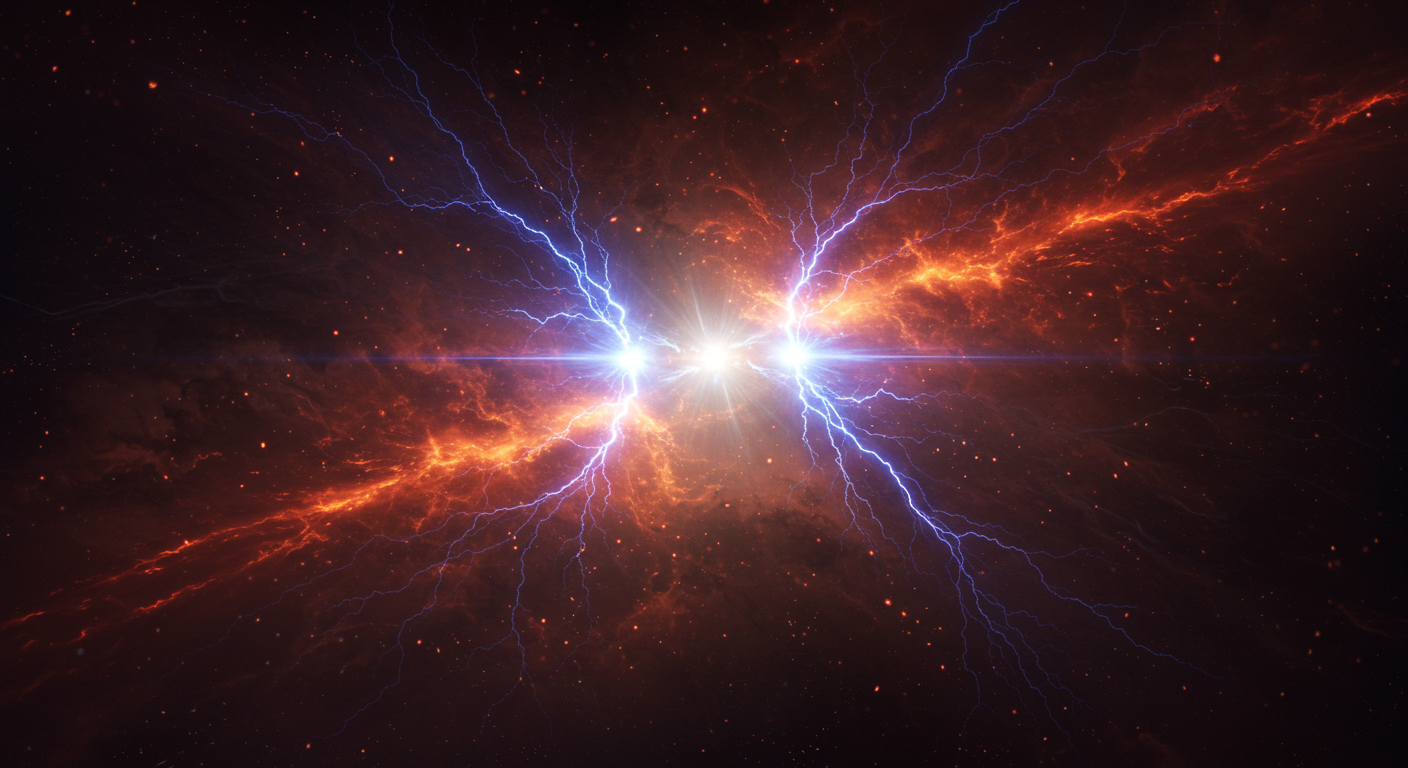The mass distribution of the first stars can be determined via the 21-cm signal

The Cosmic Dawn, the era when the first stars ignited and ended the universal dark ages, remains one of the most enigmatic frontiers in cosmology. A central uncertainty from this epoch is the nature of these first, metal-free Population III (Pop III) stars, particularly their initial mass function (IMF)—the distribution of their masses at birth. In a new paper, 2502.18098, a team led by Thomas Gessey-Jones demonstrates that the cosmological 21-cm signal from neutral hydrogen is a uniquely powerful tool to resolve this mystery. The study shows that upcoming radio telescopes have the sensitivity to definitively measure the Pop III IMF, bridging a critical gap in our understanding of the early Universe.
A New Window on the First Stars
The 21-cm signal is a faint radio signature whose strength depends on the thermal state of the intergalactic medium (IGM). The first stars played a crucial role by heating the IGM, but the exact nature of this heating depends strongly on their properties. While previous work, such as the group’s earlier study (2202.02099), explored the link between the Pop III IMF and the 21-cm signal via Lyman-alpha radiation, this new research reveals a far more sensitive probe: X-rays from high-mass X-ray binaries (XRBs).
The key findings of the paper are:
- Enhanced Sensitivity through X-ray Binaries: The study incorporates, for the first time, a self-consistent model showing that the abundance and luminosity of Pop III XRBs are profoundly dependent on the stellar IMF. This is based on detailed population synthesis simulations (2303.03435). A top-heavy IMF, for example, produces more massive black holes in binary systems, leading to drastically different X-ray heating of the IGM compared to a bottom-heavy IMF. This effect creates a much stronger, more discernible signature in the 21-cm signal than previously thought.
- Distinct Signatures for Different IMFs: The team simulated the 21-cm global signal and power spectrum for a range of plausible IMF models, from bottom-heavy (Salpeter-like) to extremely top-heavy distributions. The resulting variations in the timing and depth of the 21-cm absorption trough, as well as the structure of the power spectrum, are significant and distinguishable.
Forecasting Constraints with Next-Generation Observatories
To assess the real-world potential of these findings, the authors—including Harry Bevins, Anastasia Fialkov, Will Handley, and Eloy de Lera Acedo—employed the group’s signature Bayesian analysis framework, powered by neural network emulators. This advanced statistical approach allowed for robust forecasting of the capabilities of key 21-cm experiments.
The analysis predicts that:
- An experiment measuring the sky-averaged global signal, like REACH, could provide three-sigma constraints on the Pop III IMF with an instrumental sensitivity of just 25 mK.
- An interferometer targeting the 21-cm power spectrum, like SKA-Low, could achieve the same three-sigma constraints with 3,000 hours of foreground-avoidance observations.
These forecasts demonstrate that a definitive measurement of the mass distribution of the first stars is within reach in the near future, promising to transform our understanding of cosmic dawn, a field extensively reviewed in works like Furlanetto et al. (astro-ph/0608032).
Implications for Cosmology and Astrophysics
Measuring the Pop III IMF will have profound implications beyond just characterizing the first stars. Such a measurement will provide crucial context for interpreting observations from JWST, which has hinted at the presence of top-heavy Pop III populations to explain extremely luminous high-redshift galaxies (2208.01612).
Furthermore, this work sounds a critical cautionary note. The authors show that assuming an incorrect Pop III IMF when analyzing future precision 21-cm data could lead to significant biases in the inferred values of other astrophysical parameters. Accurately modeling the first stars is therefore not just an isolated challenge but a prerequisite for robustly testing the standard cosmological model. By establishing a clear path to measure this fundamental property, this research paves the way for a new era of precision 21-cm cosmology.





Content generated by gemini-2.5-pro using this prompt.
Image generated by imagen-3.0-generate-002 using this prompt.